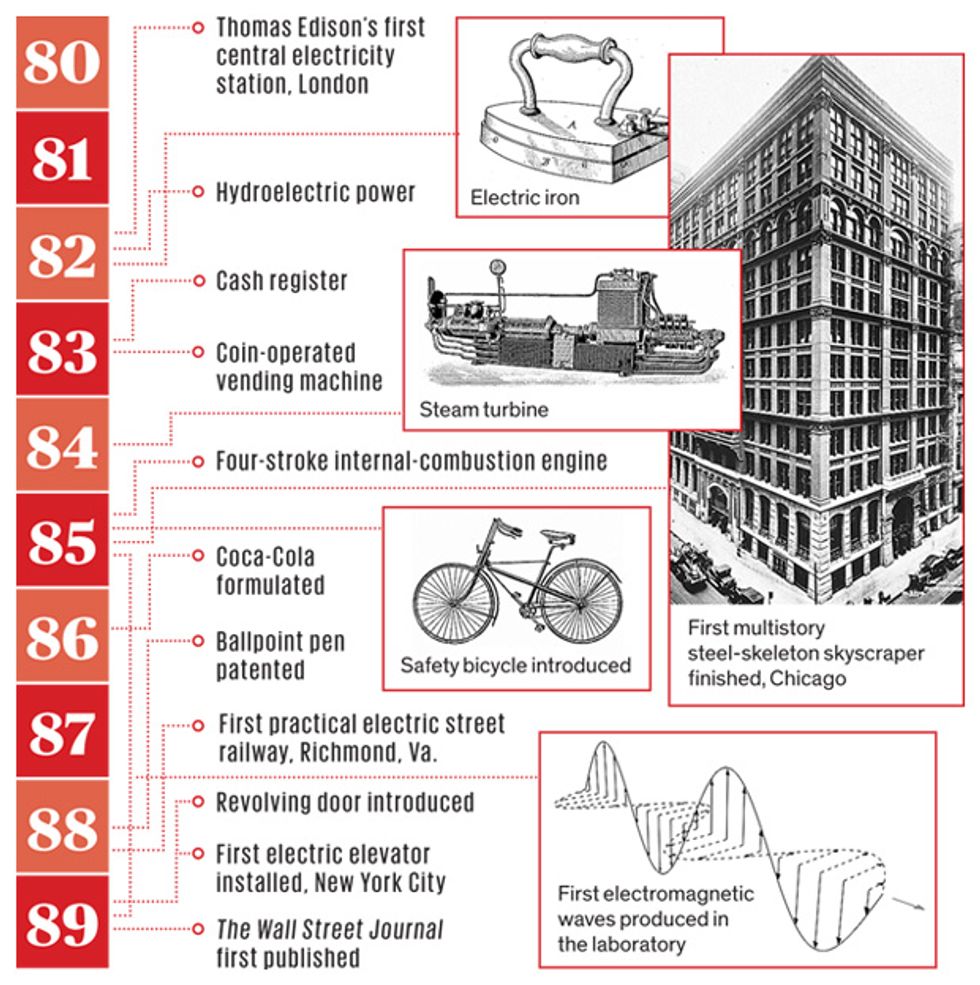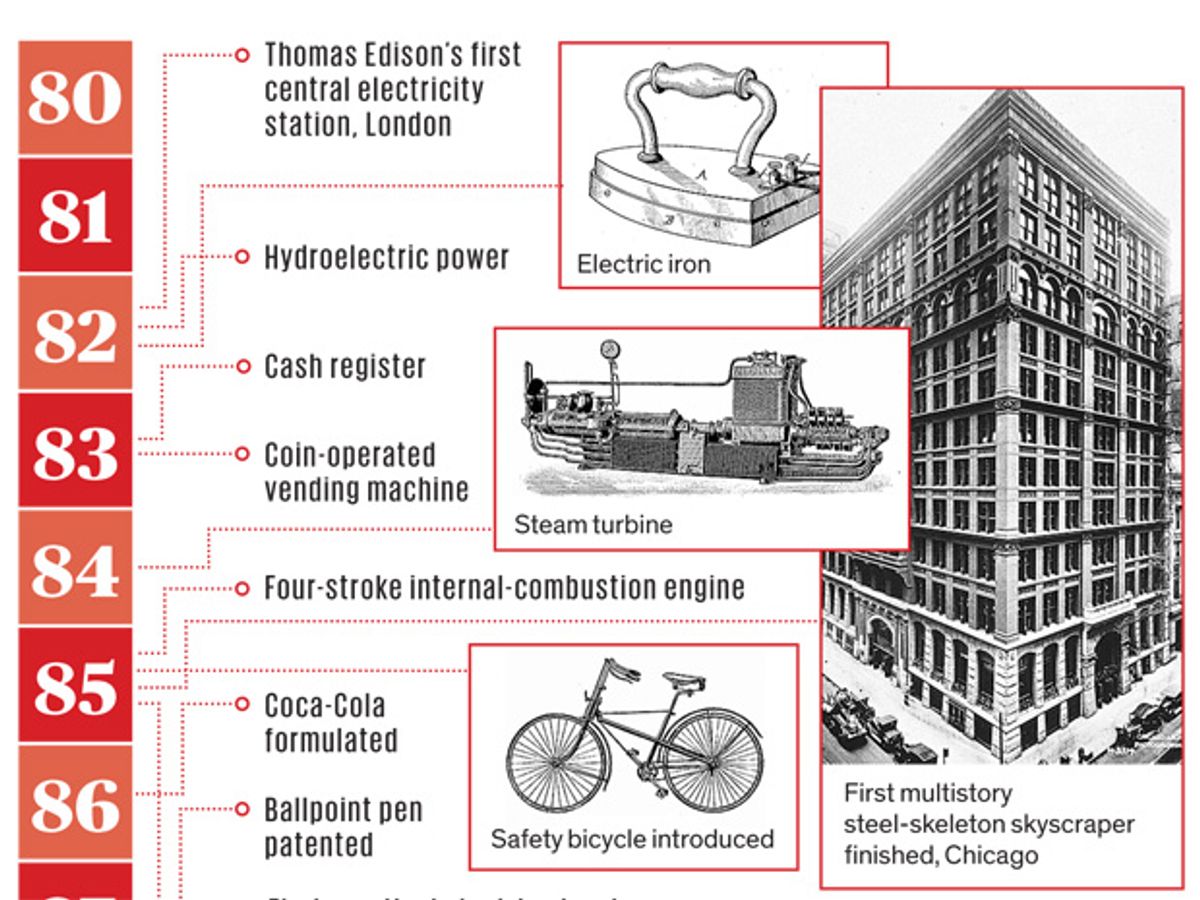
According to the worshippers of the e-world, the late 20th century brought us an unprecedented number of profound inventions. But that is a categorical misunderstanding, as most recent advances have been variations on the microprocessor theme and on the parsing of the electromagnetic spectrum.
Perhaps the most inventive time was the 1880s. Have any two sets of primary inventions and epochal discoveries shaped the modern world more than electricity and internal combustion engines?
Electricity alone, without microchips, is enough to make a sophisticated and affluent world (we had one in the 1960s). Yet a microchip-governed e-world is utterly dependent on an electricity supply whose fundamental design remains beholden to thermal- and hydropowered-generation systems, both reaching the commercial market in 1882, which still provide more than 80 percent of the world’s electricity. And we aspire to make it available at least 99.9999 percent of the time, so that it can serve as the cornerstone of everything electronic.
Add to that the feats of Benz, Maybach, and Daimler, whose success with gasoline-fueled engines inspired Rudolf Diesel to come up with a more efficient alternative just a decade later. By the end of the 19th century we also had conceptual designs of the most efficient of all internal-combustion engines, the gas turbine. And it was in the 1880s that Heinrich Hertz proved the existence of electromagnetic waves (which had been predicted by James Clerk Maxwell decades earlier). Hertz thus paved the way to our wireless world.
But the 1880s are also embedded in our lives in many smaller ways. A decade ago, in Creating the 20th Century, I traced many daily American experiences to mundane artifacts and actions that stem from that miraculous decade. A woman wakes up today in a U.S. city and makes a cup of Maxwell House coffee (launched in 1886). She considers eating her favorite Aunt Jemima pancakes (sold since 1889) but goes for packaged Quaker Oats (available since 1884). She touches up her blouse with an electric iron (patented in 1882), applies antiperspirant (available since 1888) but cannot pack her lunch because she has run out of brown paper bags (the process to make strong kraft paper was commercialized in the 1880s).
She commutes on the light rail system (descended directly from the electric streetcars that began serving U.S. cities in the 1880s), is nearly run over by a bicycle (the modern version of which, with equal wheels and chain drive, was another creation of the 1880s), then goes through a revolving door (introduced in a Philadelphia building in 1888) into a multistory steel-skeleton skyscraper (the first one was finished in Chicago in 1885). She stops at a newsstand on the first floor, buys a copy of The Wall Street Journal (published since 1889) from a man who rings it up on his cash register (patented in 1883). Then she goes up to the 10th floor in an elevator (the first electric one was installed [pdf] in a New York City building in 1889), stops at a vending machine (introduced, in its modern form, in 1883) and buys a can of Coca-Cola (formulated in 1886). Before she starts her work she jots down some reminders with her ballpoint pen (patented in 1888).
The 1880s were miraculous: They gave us such disparate contributions as antiperspirants, inexpensive lights, reliable elevators, and the theory of electromagnetism—although most people lost in their ephemeral tweets and in Facebook gossip are not even remotely aware of the true scope of this quotidian debt.
Vaclav Smil writes Numbers Don’t Lie, IEEE Spectrum's column devoted to the quantitative analysis of the material world. Smil does interdisciplinary research focused primarily on energy, technical innovation, environmental and population change, food and nutrition, and on historical aspects of these developments. He has published 40 books and nearly 500 papers on these topics. He is a distinguished professor emeritus at the University of Manitoba and a Fellow of the Royal Society of Canada (Science Academy). In 2010 he was named by Foreign Policy as one of the top 100 global thinkers, in 2013 he was appointed as a Member of the Order of Canada, and in 2015 he received an OPEC Award for research on energy. He has also worked as a consultant for many U.S., EU and international institutions, has been an invited speaker in more than 400 conferences and workshops and has lectured at many universities in North America, Europe, and Asia (particularly in Japan).



